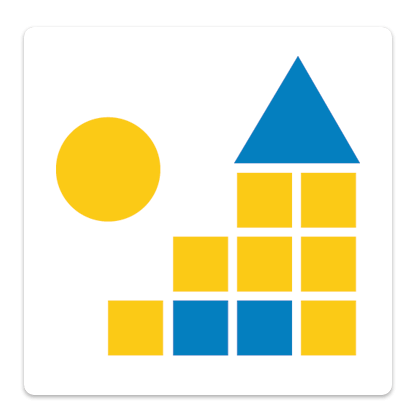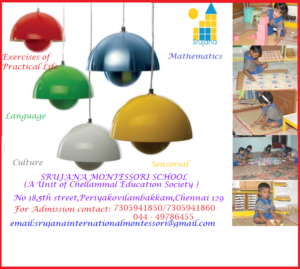Programs
Overview
The Pre-primary program is for children from 2 years 9 months to 6 years. In this mixed-age environment children spend three years in the same classroom getting to know each other and their teachers well. The continuity of returning to the same room each year makes for a strong classroom community, for children and parents alike.
Primary children learn by doing. The classroom, where everything is just their size, is full of beautiful things. The concrete materials let children explore the world through their senses, through touch and motion, and by observing and engaging with others.
Teachers guide students through the curriculum as children are ready for each new challenge, introducing lessons and then letting children practice what they have learned. As children grow, the classroom materials grow with them in the sense that older children use the materials to explore curriculum in new and deeper ways.
The 3-6 year old goes through an intense period of change, including the transition to cooperative play and more complex social interactions, a language explosion leading to beginning skills in writing and reading, the emergence of number sense and the foundations of math, and great changes in physical development.
The Montessori teacher responds to these changes in social and emotional, cognitive, and physical development with appropriate lessons to support each child’s growth and emerging capabilities. Primary children come to school five days a week, and may choose to stay for just mornings or a full day. Pre-primary children enjoy a full day of school.
The Kinder-garden Year :
Kinder-garden year, the culminating year of the Primary cycle, provides an extraordinary opportunity for 5 and 6 year olds to develop their leadership skills. Kinder-garden children act as positive peer models for their younger classmates, assuming positions of responsibility that further strengthen their own capabilities and self-esteem.
Everything that children have learned in previous years comes together in Kinder-garden year, giving children a readiness to meet new challenges.
Kinder-garden children visit the Elementary school often, meeting with their older reading buddies, participating in Physical Education, or attending presentations of Elementary student’s work. Some other special activities include Kinder-garden field trips and their own springtime musical performance.
Curriculum
There is dynamic interaction between the various curriculum areas of the Montessori classroom. While each area emphasizes specific skills, children’s developing skills and knowledge are relevant in exploring other areas of the curriculum as well. This connection between different areas of curriculum enhances children’s natural interest in and enthusiasm for learning new things. The Montessori curriculum has five main areas :
Practical Life :
Practical Life activities are central to the Montessori classroom and prepare the child for all other areas. The emphasis is on practicing skills – the process is more important than the product. Practical Life exercises give children the opportunity to refine their fine motor skills, hand-eye coordination, hand strength, balance, concentration and ability to do things for themselves. Through the repetition of Practical Life activities, children develop practical skills that will serve them all their lives. Some of the Primary Practical Life exercises include Pouring, Lacing, Scooping, Flower Arranging, Food Preparation and Serving, and Table Washing.
Language :
Language pervades the Montessori classroom and crosses all curriculum areas. The young child is introduced to the names of things, and sounds and letters, while the older child may be beginning to read. Language materials are often tactile, taking advantage of the 3 and 4 year old’s sensitivity to learning through touch. Writing often comes early to the Montessori child through the use of concrete materials,like the pre-cut letters of the Moveable Alphabet, that allow her to express her knowledge without needing precise control of a pencil.
Language Materials include Sandpaper Letters, Language Objects for initial sounds practice, word and picture Matching Cards, a Farm activity to develop vocabulary and Early Reader books.
Sensorial :
Sensorial materials are designed to help children learn about qualities like color, size, shape, length, texture, and sound. 3-6 year olds are increasingly able to make finer and finer discriminations of the many stimuli all around them. Sensorial activities assist children in refining this skill and becoming good observers of the world. Sensorial materials in the Primary classroom include Knobbed Cylinders for practice with dimension, Color Tablets, Rough and Smooth Boards, Geometric Solids, the Pink Tower, and the Binomial Cube.
Math :
Concrete materials are used to introduce mathematical concepts in the Montessori classroom. Children build their abstract mathematical reasoning skills on these early concrete experiences. They learn how a numeral represents an amount. They manipulate objects to see concretely operations like addition and subtraction.
These exercises cater to children’s developing sense of order, sequence, one-to-one correspondence and directionality. Primary Math activities include Sandpaper Numerals,the Spindle Box for counting, Numerals and Counters, the Hundred Board, Bead Chains, and Golden Beads to introduce the decimal system.
Role of an adult :
In a Montessori Environment there is no teacher. Adults are facilitators. They design, direct and demonstrate for the child. They show the child a lesson and leave the lesson for the child to master on her own – when she’s ready.
Adult demonstrates the correct use of materials as the children individually choose them, carefully watches the progress and keeps a record of their work. Individual children’s total development as well as their progress toward self-discipline is carefully guided by the directress, who prepares the environment, directs the activities and offers each child enticement and stimulation.

